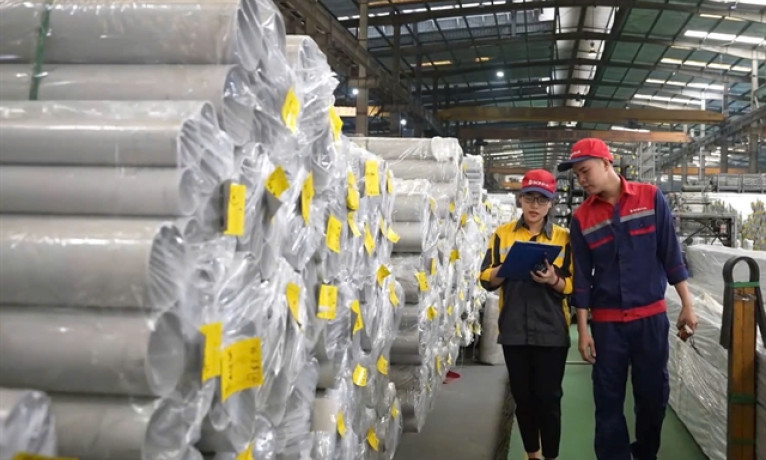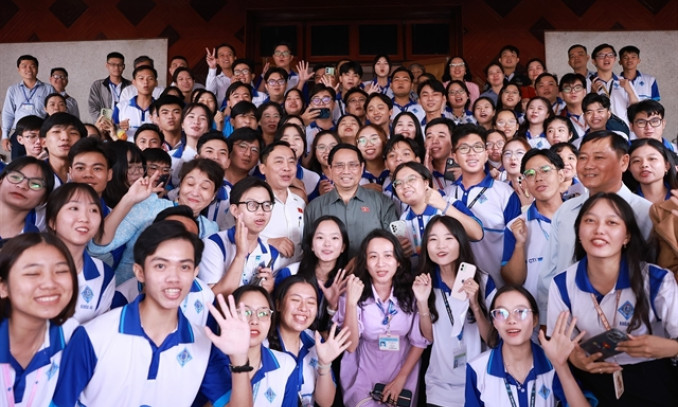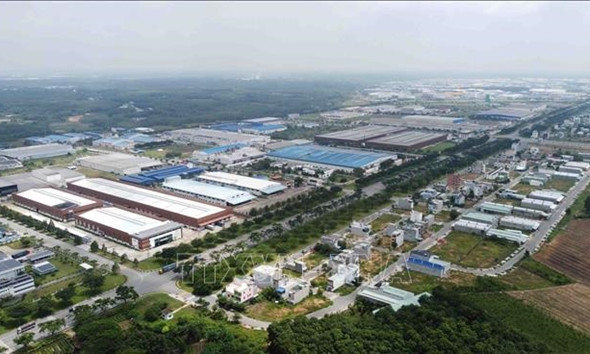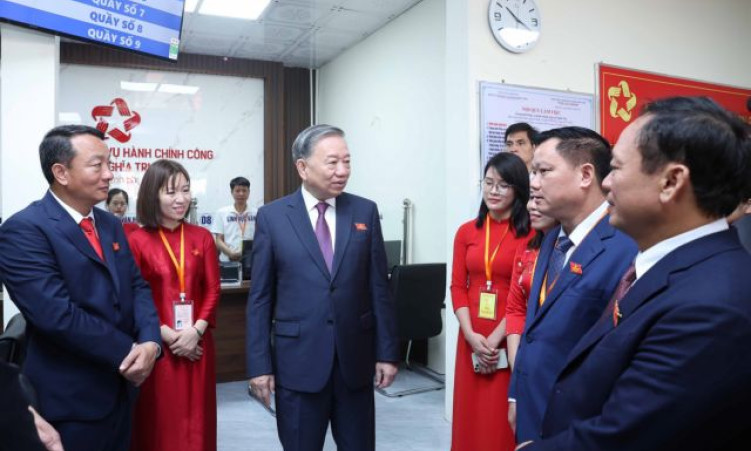Vietnam maintains garment export momentum
In January, Vietnam's total garment export value reached an impressive figure of over 3.7 billion USD, up 12% from last year, given the holiday season was already over. This reflects the industry's stable growth and catalyses businesses to increase production and exports.
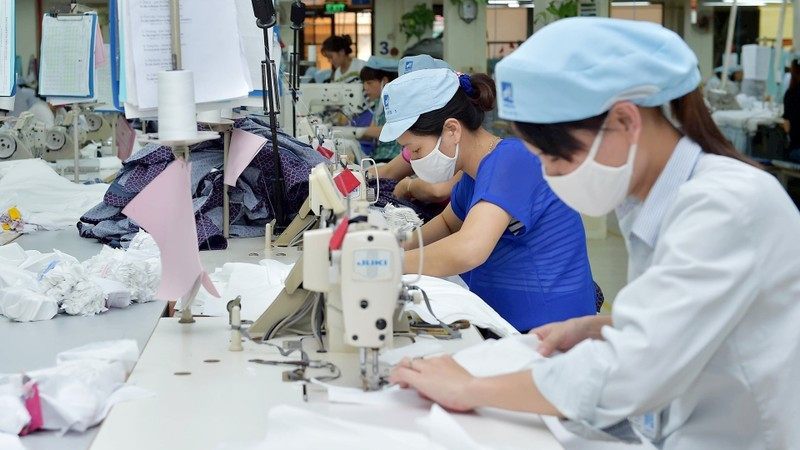
Vietnam's garment industry turnover of 44 billion USD in 2024 helped return to its position as the world's second-largest exporter. However, faced with many unpredictable market developments, alongside rising shipping and raw material costs, garment enterprises must take proactive measures to maintain growth momentum.
Promoting development
Truong Thi Ngoc Phuong, CEO of Phong Phu Corporation, reported that in 2024, the company's total revenue reached 2.55 trillion VND, up 20.7%. Pre-tax profit reached 352 billion VND, up 10.1% compared to 2023. For 2025, the company aims to achieve revenue of 2.6 trillion VND and profit of 355 billion VND.
To achieve these targets, besides improving workforce skills and management, the company will continue to invest in modern equipment, apply automation, research and develop new products, and reduce costs to increase efficiency.
"The company will continue to innovate its approach based on actual market developments, streamline its organisational structure to maximise personnel efficiency and effectiveness while expanding facilities and boosting production to achieve the set goals quickly", said Phuong.
Similarly, Pham Tien Lam, General Director of Duc Giang Corporation, stated that last year, the company's revenue reached 2.4 trillion VND, with profits of 103.5 billion VND, up 16% from 2023. For 2025, the company aims for export turnover of about 90 million USD, up 10%, with a profit of 28-30 billion VND, up approximately 25%, returning growth to pre-COVID-19 levels. The corporation will focus on three main solution groups: explore, adapt and change.
Lam affirmed that the primary task is to improve production organisation and increase labour productivity to ensure revenue reaches at least 25 USD/person/day, with workers' income 1.3 times higher than the average in localities where factories are located. Meanwhile, the company will focus on products and markets with strengths to increase value and enhance market competitiveness.
Not only have unit prices remained stagnant, but orders are trending shorter due to changing global consumer behaviour, leading to customers confirming orders in shorter timeframes, demanding higher quality, faster delivery times, and more complex product structures. Therefore, to maintain production and business operations and promote growth, enterprises must take proactive measures to respond to market fluctuations and maximise export opportunities.
Increasing competitiveness
In 2025, the garment industry is forecast to continue facing numerous challenges due to labour shortages, increasingly fierce competition, supply chain risks, and rising input costs. These factors will negatively impact business production activities.
Vinatex CEO Cao Huu Hieu stated that Vietnam is achieving the best growth rate among textile and garment export powerhouses, with growth of about 11% annually. Meanwhile, Vietnam’s direct competitors, like Bangladesh and India, are showing signs of decline.
Additionally, US tariffs on China present an opportunity for Vietnam to receive order shifts and increase market share if regulations are complied with.
Hieu said that in the first six months of the year, the garment industry is forecast to continue growth momentum from late 2024 with many positive growth signals, as major import markets like the US and EU are recovering, thereby improving income and increasing personal consumption.
He added that for the latter months, competition will become increasingly fierce when markets are predicted to recover and return to normal after the second quarter. Consequently, Vietnam will face many disadvantages due to labour costs nearly three times higher than Bangladesh and continued increases in material and shipping costs. Therefore, garment enterprises need to improve management, reduce costs and invest in productivity improvement and value addition to increase market competitiveness.
According to Vinatex Chairman Le Tien Truong, to achieve the target of 6% revenue growth and 10% profit growth compared to 2024, the group will implement multiple simultaneous solutions to promote growth as expected. This includes continuing to review and refine the organisational structure to ensure efficiency while enhancing group-level competitiveness and fully leveraging negotiation advantages and chain participation.
The group will also establish a research and development centre for the yarn sector, standardise management methods upgrade yarn enterprise benchmarking, develop new products and pilot new models.
In the long term, Vinatex remains steadfast in its strategy to become a destination capable of providing complete green solutions for customers in the global supply chain, with leading scale in Vietnam and the region.
To implement this strategy, the group will focus on key objectives regarding personnel, and sustainable development on four pillars of ESGF; promoting internal capabilities of each enterprise, vertical and horizontal linkages between enterprises, and sharing operational resources to synthesise into the group's overall strength.
Additionally, the group will continue to invest in technology to improve productivity, reduce labour dependence, and research and develop plans to test group-level smart factories to increase competitiveness and affirm its position in the global textile and garment chain.
Given the context of continuing complex and unpredictable global situations affecting the industry's growth target of 8 to 10%, garment enterprises need to take proactive measures to adapt to market fluctuations, boost sample development investment, expand markets and customers, as well as take good advantage of opportunities, especially from new-generation free trade agreements (FTAs).
Vu Duc Giang, Chairman of the Vietnam Textile and Apparel Association affirmed that FTAs help businesses expand markets and customers, contributing significantly to the industry's growth. Notably, the Comprehensive and Progressive Agreement for Trans-Pacific Partnership (CPTPP) has created great opportunities for Vietnam's garment industry to access new markets such as Canada, Australia and New Zealand.
Faced with competitive pressure from rivals, businesses must further improve workforce capabilities and skills, be flexible in production, accept challenging orders with high technical requirements and short production times with fast delivery to meet consumer demands.


